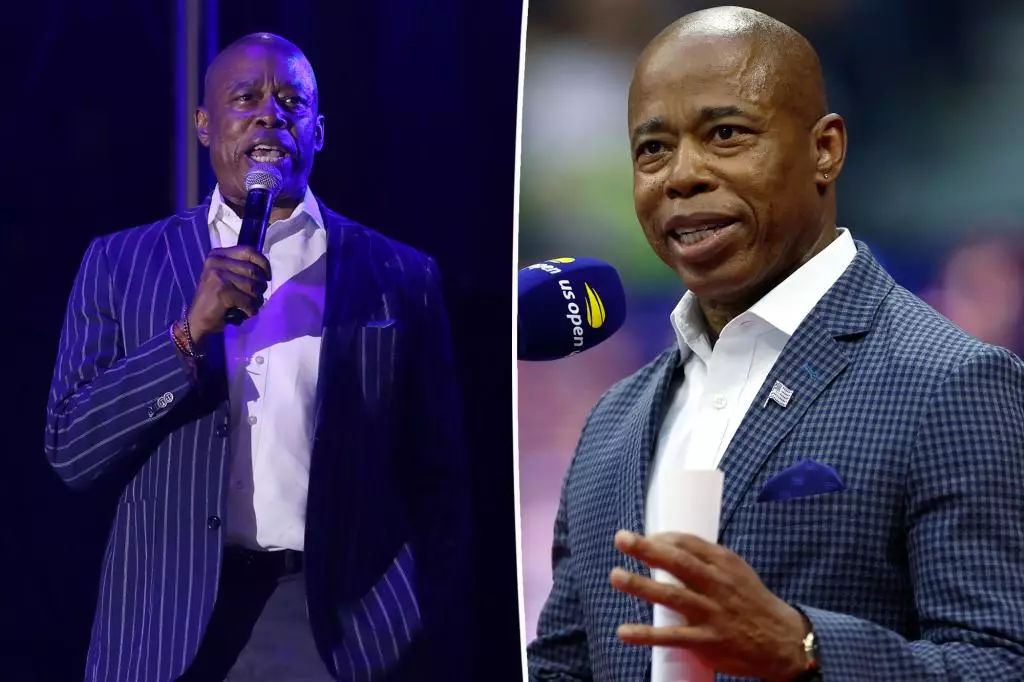In the contemporary landscape of politics and leadership, personal branding and social networking have emerged as critical tools for influence. Mayor Eric Adams’ recent weekend of high-profile social engagements exemplifies this phenomenon vividly. His participation in exclusive parties, from billionaire-funded gatherings to birthday celebrations of social entrepreneurs, underscores a broader strategy—maintaining visibility within influential circles to bolster his image and political capital. Such events are not mere leisure; they are carefully curated opportunities for leaders to project strength, connect with key stakeholders, and subtly sway public perception. This approach suggests that in an era where perception can be as powerful as policy, building alliances through social capital is no longer optional but essential for effective leadership.
Beyond Fundraising: The Tacit Power of Social Events
While the official narrative positions Adams’ weekend as a campaign for local businesses and a show of support for entrepreneurs, the underlying intent runs deeper. Attending elite gatherings allows politicians to reinforce their relevancy among the influential class that often shapes political discourse and decision-making. The presence of wealthy financiers, celebrity musicians, and entertainment moguls indicates the importance of cultural cachet and social credibility. The strategic timing—coinciding with rival politicians like Andrew Cuomo—further underscores the subtle political messaging embedded within such social appearances. In this context, these gatherings serve as modern political theaters where charisma, networking, and strategic alliances can translate into votes, endorsements, or simply a resilient public image, even away from the spotlight of official politics.
The Symbiotic Relationship Between High Society and Politics
What becomes clear from Adams’ weekend escapade is the deep intertwining of the political elite with America’s luxurious social fabric. The inclusivity of diversity—ranging from musicians like Robin Thicke to entrepreneurs and social influencers—demonstrates how cultural outlets intersect with political aspirations. Events like Tepperberg’s birthday bash, combining wellness influencers, celebrity performers, and hospitality magnates, are microcosms of a new power dynamic: social influence now directly impacts political capital. The fact that Adams’ campaign team defends these outings as purely supportive of local economy reveals an understanding that such appearances function as subtle signals of commitment and engagement with the via media of public opinion. These moments of high society serve as leverage points to demonstrate leadership not just through policy, but through charisma and cultural affinity.
The Politics of Visibility and the Modern Power Play
The incident involving Adams and Cuomo in the same social setting illustrates a nuanced game of power—where proximity, timing, and shared spaces become strategic assets. Both politicians’ simultaneous presence at affluent gatherings hints at a complex dance of positioning, where visibility is tantamount to influence. The fact that these leaders are photographed at events with celebrities and entrepreneurs normalizes their association with success and affluence. For the populace, this may breed admiration or skepticism, but for insiders, it’s an essential recognition of the currency of influence. The modern politician must navigate this terrain skillfully—balancing authentic policymaking with curated social appearances that affirm their standing among the elite. This blend of leisure and leadership underscores that in today’s world, influence is often cemented not only through votes but through cultural capital embedded in social networks.
Shaping Perception Through Cultural Engagement
Artists, entertainers, and social media influencers who partake in these gatherings amplify a sense of relatability and aspirational appeal. Robin Thicke’s surprise on-stage performance and the touching moments from Tepperberg’s celebrations create memorable images that resonate beyond the immediate event. Such cultural engagement doesn’t just entertain; it humanizes leaders and highlights their ability to connect with diverse audiences. These cultural moments act as strategic soft power, enhancing the politician’s image as approachable while reinforcing their ties to the creative and entrepreneurial sectors that drive economic vitality in urban centers. Ultimately, the intertwining of celebrity, social influence, and politics exemplifies a paradigm shift—where cultural capital increasingly equates to political capital, shaping public perception in subtle yet profound ways.
In this new landscape, influence is an ecosystem where social circuits are as vital as legislative agendas. Leaders who grasp this reality are effectively wielding a complex tool—crafting perceptions, building alliances, and maintaining relevance through curated moments of cultural diplomacy. The line between social entertainment and political strategy continues to blur, revealing a sophisticated dance where image, influence, and power are intertwined in the grand social theater of modern leadership.
